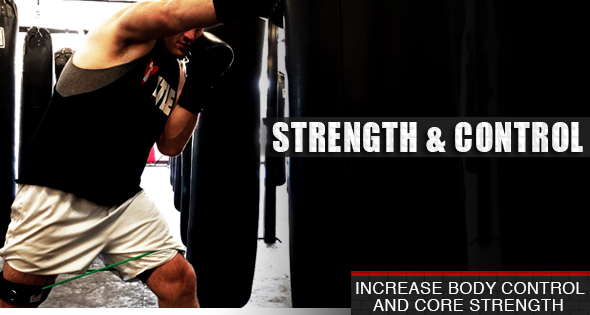Boxing Lessons For Footwork
Boxing is a sport where boxing combos are thrown with the arms. The arms take all of the credit and glory when a great boxing combo is thrown. However, the unsung hero of all boxing combos and punches are the feet. If someone were to walk into a boxing gym and demand boxing lessons the first thing the instructor would go over when teaching an athlete how to box is what to do with their feet. Good footwork can help to create quick and powerful punches and boxing combos. Poor footwork can leave athletes with one powerful punch followed by off balance strikes, and awkward boxing combos.
The key to being successful during boxing is learning how to properly position the feet, particularly the rear foot, so quick and powerful boxing combos can be implemented, while maintaining the quickness and speed to avoid the opponents boxing combos.
How To Box With Good Movements
For athletes just learning how to box they should always think about trying to create a 90 degree angle with their feet. The back foot should be opened up so the toe is pointing to the side of the athlete while the front foot is pointed straight ahead at the target. Every athletes’ first boxing lesson should be to keep their back foot on the ground. This point cannot be emphasized enough. All of the power for boxing combos and punches is generated from the back foot. Athletes who throw powerful crosses and allow their back foot to come off the ground have instantly ended their boxing combo. Once the foot comes off the ground athletes must bring the foot back to the ground and reset. This movement takes time which will interrupt the athletes boxing combos and result in either slower boxing combos, or significant force reduction as the athlete gets deeper into their boxing combos.
Coaches and trainers should always make footwork a priority during boxing lessons as athletes can only progress and continue to learn how to box after proper footwork has been practiced and mastered.
Use Resistance To Learn How To Box
When athletes want to learn how to box they must first learn, practice, and master proper footwork. Along with great footwork one of the beginning boxing lessons should cover punches and boxing combos. Athletes will need to know how to throw punches like the jab and cross in order to combine punches into boxing combos that can be used to devastate opponents.
After athletes have learned how to use their feet to help generate power and speed, and mastered some basic boxing combos, athletes should begin to focus on additional boxing lessons that can help add additional speed and strength to punches and boxing combos. Athletes can add this additional speed and strength to their boxing combos by actively using boxing drills that focus on practicing boxing combos, footwork, and speed. These boxing drills can use any boxing combos the athlete wants to improve on. Performing these boxing combos exercises with some sort of resistance placed around the legs will help athletes to focus on how their feet, hips, and legs are positioned as well as how these muscles are working to help generate power for the boxing combos being thrown.
Kbands Leg Resistance Bands are a great training tool to use when performing boxing combos exercises. The key placement of the Kbands Leg Resistance Bands around the bottom of the quadricep allow for athletes to strengthen their hip flexors and abdominal muscles while going through their boxing combos. These are a great tool for athletes to enhance muscles in the hip flexors, glutes and thighs allowing more power to be generated from the lower body during punches.
Athletes can perform additional strengthening exercises with the Kbands Leg Resistance Bands to help generate even greater power when performing strikes. Go to the Training Section to learn about other, non-sport specific drills, which can be performed in the same workout as the In And Out Boxing Combos.
In And Out Boxing Combos
Using Kbands Leg Resistance Bands while performing boxing combos exercises is a great way for athletes to increase the power of their punches by strengthening the lower body. To perform the Kbands In And Out Boxing Combos athletes will need a set of Kbands Leg Resistance Bands, a pair of boxing gloves, and a bag or partner to absorb the boxing combos.
Athletes will first attach the Kbands Leg Resistance Bands just above the knees. The amount of resistance used during the In And Out Boxing Combos should be challenging, but not overpowering to the point that good foot work and body positioning cannot be maintained. Athletes should begin with the Red Level of resistance bands and once comfortable performing the In And Out Boxing Combos with the Red Level Resistance Bands should advance into the Green Level Resistance Bands, followed by the Blue Level Resistance Bands.
Once the Kbands Leg Resistance Bands are attached athletes will begin the In And Out Boxing Combos by standing in front of their bag, or partner, and throw a jab, cross, jab (1-2-1). This is a basic boxing combination that will allow athletes to focus on their footwork and execution of the punches without becoming exhausted. After the boxing combo is thrown athletes will retreat from the bag for 5-8 seconds before returning to the bag and throwing another jab, cross, jab combination. Athletes will continue this attack and retreat method for 8 sets of boxing combos before moving into another boxing combination.
Athletes who also practice kickboxing can add additional kicks into their combinations. Whichever boxing combos are used by athletes during the In And Out Boxing Combos athletes need to use combinations that will allow some aspect of the strike or combination to be improved. Whether it is improving on footwork, timing, body control, or power, athletes need to make sure that enhancing their skill set is the main priority of all kickboxing and boxing lessons.

